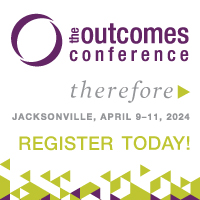
The Perfect Match
Leading and measuring belong together!
I totally understand that the degree of change and the pace of change will be different for every person and organization. That is not my concern. What I am concerned about is, for the most part, leaders of faith-based nonprofits are under the illusion that they are making progress when every indicator around them says they are not. Simply put, the solutions nonprofits — even faith-based nonprofits — are trying to provide, are not keeping pace with the problems they’re trying to solve. Our outcomes are lacking.
When we measure organizational outcomes we receive facts, and these facts should be the leader’s best friend. As leaders we want to accomplish something! Something that has to do with what our ministry’s core vision dictates. To me, the first question leaders must answer with their board is: “How do we define progress and accomplishment for our organization?” A board can’t hold someone accountable if neither the leader nor the board knows the answer to this question.
There are three types of data that can help answer this question. However, in order to accurately measure a faith-based nonprofit’s progress and accomplishments, only one of these three is a true measurement.
1. Input
Input describes how much in the way of resources (both financial and non-financial — such as volunteer time, materials, equipment, etc.) was used to conduct a program or activity.
2. Output
Output measures the activities conducted by the organization: the number of classes held; the number of students enrolled or graduated; the number of church members; the attendance in church services; the amount of concertgoers; the number of food baskets served; the scope of refugees served; the number of listeners; and the like.
Measuring input and output is an important element of overall stewardship, but the problem with this type of numerical data is that while it shows the quantity and cost of services provided, it does not indicate whether any real benefits resulted. Did the students truly learn anything? Did church attendees grow spiritually? Did we really move people to a closer relationship with Christ? Did we really, really, help the refugees?
3. Outcomes Measurement
Outcomes measurements indicate how much better off the people served by the faith-based organization are as a result of the organization’s activities. For example, by how much has the culture of your community changed for the better because of your witness? How much better is that public school because of your involvement? You get the point.
Often, we simply hold up numbers one and two — input and output — in annual reports to define a “successful year.” The problem with this is that outcomes measurement is the most vital component in measuring ministry success, yet it is rarely found in annual reports. If you are the leader and you are not pushing hard for outcomes measurement, you need to do so. This has become one of the most important stewardship activities that a faith-based organization can undertake.
There are several compelling reasons to measure outcomes:
- OUTCOMES measure the effectiveness of programs.
- OUTCOMES identify effective practices.
- OUTCOMES identifiy practices requiring improvement.
- OUTCOMES help prove your true value to existing and potential funders.
- OUTCOMES provide clarity and consensus around the purpose of your program.
So how do you begin? Ideally, you start with the end in mind. Measuring outcomes starts when the planning for the project starts and before the activities are underway by asking this question: “What, through this activity, will we accomplish in light of our vision?”
Measuring outcomes with something other than simple financial or attendance measurements is really the only way to know if you are making progress, accomplishing what God has called your faith-based organization to accomplish.
##
Tom Atema is president of Vertical Horizons Group and the author of Leadership in Blue Jeans. This post in an excerpt from the 2014 Spring Edition of Outcomes Magazine.
 Be sure to order your Digital Pass from the CLA Dallas 2014 conference. Unlock the higher thinking of dynamic keynote speakers, go deeper with backstage interviews, and capture the best of the best CLA faculty as they share high-impact concepts from their workshops.
Be sure to order your Digital Pass from the CLA Dallas 2014 conference. Unlock the higher thinking of dynamic keynote speakers, go deeper with backstage interviews, and capture the best of the best CLA faculty as they share high-impact concepts from their workshops.

What is Christian Leadership Alliance?
Christian Leadership Alliance equips and unites leaders to transform the world for Christ. We are the leaders of Christ-centered organizations who are dedicated to faithful stewardship for greater kingdom impact.
Sign up for FREE blog updates.
Upcoming Events
Check back later!




